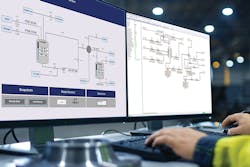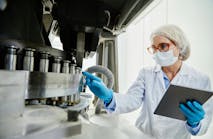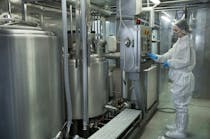Using life cycle dynamic simulation to drive projects and performance
Live processes in petrochemical plants are fast, interactive, hazardous and continuous, making it difficult to train operators to make good decisions. Moreover, these same challenges make it hard to adequately test changes and design processes necessary to deliver improved life cycle performance. Such difficulties ultimately create performance roadblocks, which are particularly problematic in an industry constantly striving to run plants as profitably as possible without compromising on safety.
In recent years, organizations have begun to focus on simulation to deliver plant improvements and test process changes without the risk of decreased safety or lost production. The newest and most comprehensive simulation philosophy — life cycle dynamic simulation — is focused on holistic, scalable simulation throughout the plant life cycle that can help chemical organizations make strategic project and operations decisions that drive toward top-quartile performance without sacrificing safety or uptime.
Life cycle dynamic simulation and digital twin technology
Simulation provides the flexible functionality that chemical operations need, reducing the risks associated with common chemical plant activities such as rebuilding compressors and other critical equipment. In addition, simulation technology simplifies improvement of strategies to deal with ongoing issues such as catalyst degradation, limiting its impact on the way the plant operates.
The digital twin is the next step in life cycle dynamic simulation technology. Utilizing a digital twin — an operations reference system hosted in a private cloud environment or maintained locally on virtual servers — life cycle dynamic simulation not only improves operability and project outcomes, but also leverages generated data to continually improve operations over the life cycle of the plant. With digital twin technology, organizations can easily perform complex engineering and training without risk of outages or damage in the live plant environment.
With digital twin technology, organizations can create virtual plant models that simulate the automation and plant technologies used in the physical world.
Results in project execution and operations
Organizations using life cycle dynamic simulation gain the resources to deliver more successful capital projects. Teams can test control system design, change and strategy in a safe environment to ensure ideal functionality of systems upon startup.
After project completion, companies can leverage the same resources used in engineering to see real-world results and consequences of process changes. Personnel can take advantage of real-time automation system support features and simplified decision support. Using simulated plant replicas, engineering teams can create and test "what if" scenarios, such as implementing hazardous situations or modifying control parameters and strategy, seeing the results of these changes without impacting the real plant.
Simulation in action
Speeding and simplifying capital projects
Continuous petrochemical manufacturing is a complicated task. Managing the critical sequencing of startup and shutdown as part of the plant’s standard operating procedures (SOP) and understanding how to handle problems such as stuck valves, pump failures and boiler faults requires a pool of skilled personnel to bring a new plant online quickly and safely.
Unfortunately, skill usually comes with experience, and this means that the people a plant most needs are often nearing retirement, taking their experience with them. This is particularly problematic for greenfield plants that need to quickly build a large pool of skilled personnel to ensure a good launch.
One petrochemical plant facing this challenge leveraged advanced simulation technology to bring its new plant online more quickly.
Training operators by having them practice startup, shutdown and disaster response using actual equipment was not possible. With the high pressures and dangerous chemicals present in the process, training with real equipment would be both expensive and dangerous.
The organization used dynamic simulation to quickly give plant personnel the training they needed to be safe and effective operators of the plant. The operations team was able to practice startup and shutdown procedures as well as responses to process aberrations without any risk to people or equipment. In addition, the ability to train in parallel with construction meant that bringing personnel up to speed wouldn’t delay plant startup.
Using Mimic simulation software, the project team was prepared to train operators on a highly accurate digital twin of the control system they would be using when the plant came online. However, the plant ran into permitting and construction delays that extended the deadline for operator training. This, however, did not result in the simulation system sitting idle. During the delay, the project team put the simulator to work debugging the control system.
Because the digital twin is an identical simulation of the plant’s control system environment, performing debugging using the simulated system generated reliable results for startup and shutdown as well as process excursions planned for in the training scenarios. Engineers compared the simulation results from the model to the expected results and reported any deficiencies to the engineering firm in charge of design. The firm could then fix the problems long before startup of the plant, ensuring that there would be no additional delays due to startup failures.
The training provided more confidence to employees than the training team expected. The high-fidelity simulation of the control environment made training operations virtually indistinguishable from actual operations. New employees received comprehensive training that will keep them safe and keep the plant running at peak performance. They were able to employ this knowledge from the first moments of plant startup, bringing the plant online well ahead of schedule.
Preparing for operations across a life cycle
At another organization, getting the best return on investment meant getting away from the high prices of purchasing feedstock from a third party. The organization knew it could more quickly and affordably produce its own feedstock and would have the added benefit of being able to sell extra supply back to the global market; however, the plant was in a remote area with limited access to experienced, well-educated operators. It would need such a staff to safely, reliably and profitably operate the plant.
The organization could have brought in personnel from a bigger city. The problem was, such expertise would come at a high price point, and more importantly, the experts would be unlikely to stay for a long period of time. Investing in local personnel would deliver a more affordable, more reliable workforce, but to bring local people up to speed on startup, shutdown and SOPs for a complicated chemical plant seemed a daunting task.
Fortunately, the project team had two industry specialists who knew the value of simulation.
The organization built a simulated plant long before actual plant construction began. The specialists used this simulation to train new operators on startup and shutdown, gas loss procedures, utility loss procedures and other system failures that they would need to know to operate the plant for the years ahead. The training simulator also taught the new operators how to distinguish small problems from big problems, helping them have more direct impact on the safety of the plant environment.
Ultimately, the plant managed to train six operators who were qualified to run full startup and shutdown procedures, as well as an additional 14 who were qualified to run normal operations. This gave the plant three shifts of people ready to start the facility, plus plenty of people to swap in and out once the facility was started. Most importantly, these employees were local people who had an interest in staying in the area, giving the organization confidence it wouldn’t have to find replacements every few years.
Once the organization saw the impact of the training, the simulation program was expanded to regularly train operators on unusual circumstances that could occur in the plant, making it highly unlikely that operators will ever be caught completely off-guard.
Digital twin simulation allows trainers to use real-world scenarios to train new operators and further the professional development of experienced personnel.
Driving change with scalable fidelity
Because technology differs across the organization, and even across the plant, companies will want to customize simulation solutions to meet the specific needs of the project or process that is being simulated. Scalable digital twin technology allows organizations to upgrade simulation model fidelity from low to medium to high as needed for individual applications.
Users often assume that high fidelity is best, and, in some cases, it is. However, using high fidelity models when they are not needed can slow projects and add additional costs with little or no return on investment. Taking advantage of digital twin technology with selective fidelity allows organizations to tailor their modeling environment to provide different levels of fidelity based on need. When fidelity can be scaled to fit the needs of an organization, companies save significantly on cost and time, making it easier to build a business case for digital twin and dynamic simulation technology, as well as operator training.
One chemical organization that was suffering from a significantly underperforming plant witnessed the value of selective model fidelity firsthand. The plant was sold-out, with no way to increase output due to poor batch control design. Engineers knew it was possible to improve production with better batch control, but couldn’t run the necessary tests to do so, as they would potentially impact the already limited production.
Engineers had initially dismissed the idea of simulation as a solution to the batch control problems, because they knew reaction models would require high fidelity, and they worried that implementing high-fidelity models plant-wide would be costly, complicated and time consuming. Fortunately, the engineering team discovered the flexibility of selective model fidelity. With a simulation platform providing for selective fidelity in place, the team was able to use medium fidelity Dynamic Core modeling for the entire plant, with high fidelity in use only for the reaction models. The team was so pleased with the performance and savings that they are examining the possibility of implementing simulation organization-wide.
Selective fidelity allows organizations to meet the specific and changing needs of their applications, lowering the cost of entry and the total cost of ownership.
Putting it all together
The complex environment in which chemical producers operate requires robust solutions to ensure maximum productivity and reliable safety. Ensuring that operators are properly trained to make good decisions — even in complicated situations — and leveraging existing engineering resources to improve operations over asset life cycles gives plants the competitive advantage they need to drive top-quartile performance. Such strategies do not require costly redesign of plant infrastructure or, in many cases, creation of new plant data. Life cycle dynamic simulation delivers powerful simulation tools for safe training and testing using the data and tools a plant already has in place. Scalability of those same simulation tools ensures that reliability teams can continue improvement across the life cycle of the plant’s assets, no matter what the future may hold.
Tom Herman has 39 years in the industry and has been involved with the building of multiple chemical plants. He has had many differing positions from a young engineer to area superintendent and technical manager for several companies. Herman is presently a senior process consultant at a facility in Baton Rouge. He graduated from The University of Cincinnati.
Sean Sullivan has seven years in the simulation industry and has been involved in building of multiple simulation systems. From modeling power boilers to oil refineries to ammonia plants, Sullivan has climbed to the position of lead project engineer, Process Simulation at Emerson in Chesterfield, Missouri. He graduated from Missouri University of Science and Technology.



